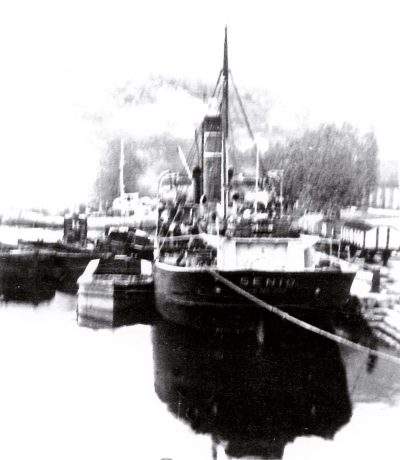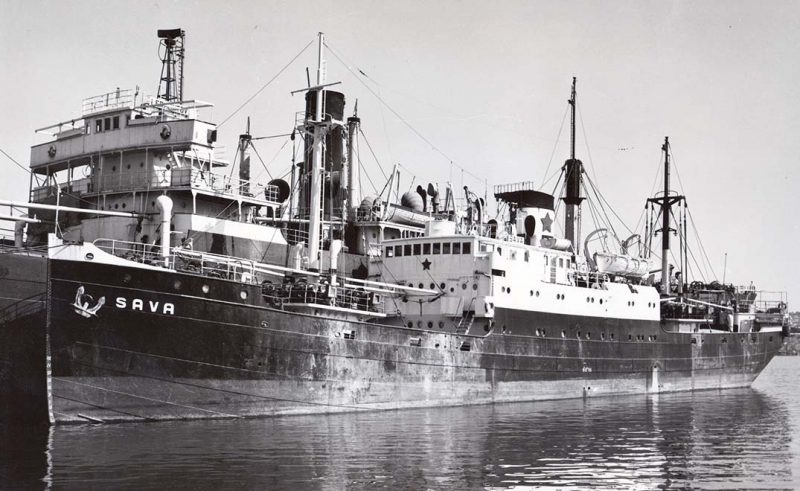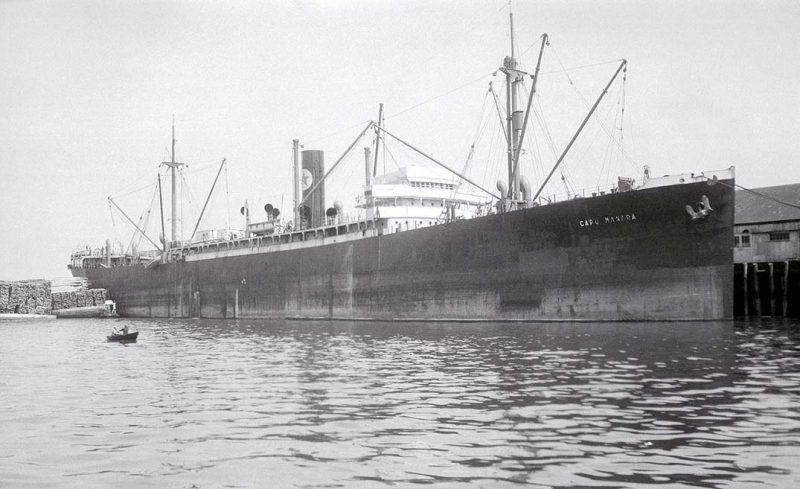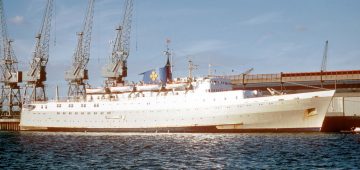A major Switzerland based shipowner – Part One
Introduction

 Ships operated by the Italian born ship owner Sebastiano Tuillier had been frequent visitors to some United Kingdom ports from the 1950s to the 1970s. The funnel and houseflag colours, as shown above, were often confused by ship watchers with those of the Greek owner Tsavlaris whose colours were similar. Tuillier’s fleet, which had peaked at about 30 ships in 1971, was mainly registered under “flags of convenience” such as Panama.
Ships operated by the Italian born ship owner Sebastiano Tuillier had been frequent visitors to some United Kingdom ports from the 1950s to the 1970s. The funnel and houseflag colours, as shown above, were often confused by ship watchers with those of the Greek owner Tsavlaris whose colours were similar. Tuillier’s fleet, which had peaked at about 30 ships in 1971, was mainly registered under “flags of convenience” such as Panama.
The French ancestors of Sebastiano Tuillier (1910-82) had followed Napoleon I to Malta in 1798 and then settled in Catania, Sicily, where he was born and soon gained a keen interest in shipping. In 1933, under the name of Sebastiano Tuillier di Natale and with the help of his family, he bought his first ship, a small cargo steamer which he named ESTERINA. Built at Wallsend in 1889 as SOUTHWARK, she had been operated by James Fisher & Sons from 1920 until sold in 1926 to Catanian owners to trade as BIANCHINA. Tuillier had operated the ship as ESTERINA between 1933 and 1939, selling her before War commenced. As the Genoa based RINA CROCE she was mined in 1940. It is interesting to note that, in 1968, Tuillier had purchased the WHITE DAISY from the same owner, F.Italo Croce.
Sebastiano Tuillier had married a daughter of Giovanni Camalich, a shipowner living in Lussinpiccolo, an Adriatic port located south of Rijeka which became part of Yugoslavia in 1947 and is today the Croatian port of Mali Losinj. They had two sons, Natale, born in 1942 and named after his grandfather, and Eugénio, born in Venice in 1948, both of whom took up positions in the business and became Swiss citizens in 1977. While Natale sadly died in a car accident in Croatia in 1996, Eugénio continues an involvement in the business.
Relocation From Italy To Switzerland
Serving the Italian Navy during the Second World War, Sebastiano Tuillier was stationed at Venice and charged with organising convoys to supply troops in Albania. Perhaps for that purpose, in 1940, he purchased two elderly vessels named ESTERINA and SENIO which, although registered at Zattere 402a, Venice, were managed by his friend Ubaldo Gennari of Pescara.

SENIO, built in 1879 as ACTIVITY for Cardiff owners, was transferred to Catanian registry in 1948 but, renamed MAESTRALE, was soon sold to Raffaele Romano of Naples and broken up at Vado Ligure in 1955.


The 1900 built ESTERINA was sold in 1941 to his father-in-law and registered at Lussinpiccolo but on 8 September 1943 was seized by German forces in Dalmatia, Croatia. Damaged at Split on 6 November 1943 during an allied air attack, she was beached and eventually refloated in 1946. Towed to Rijeka for repairs, the ship was from 1952 operated as SAVA under the Yugoslav flag by Jadranska Slobodna Plovidba until arriving at Sveti Kajo, near Split, on 19th August 1966 for breaking.

In 1948 Sebastiano Tuillier became involved in the operation of two larger vessels of 1920s vintage, named CAPO MANARA and the ESPERANZA, which were traded successfully until 1953 and 1955 respectively. It seems that CAPO MANARA, nominally owned by Cia. di Nav. “Stellamaris” S.p.A. and registered at Genoa, was jointly owned with the Italian partners Fratelli Piaggio and Angelo Ravano. Another ship operated by “Stellamaris” at that time was the GIACOMO PIAGGIO which in 1954 became Angelo Ravano’s ENRICHETTO.
ESPERANZA was nominally owned by the Panama registered Cia Naviera Audax S.A., it is thought that she was owned by Torquato Romano Gennari, a son of Ubaldo Gennari, although from 1949 she was registered at Venice in Sebastiano Tuillier’s own name. T.R. Gennari had proceeded to purchase the 1918 built former CLAN MACBEAN, traded as AUDAX between 1950 and 1959. Meanwhile, due to the unstable political situation in Italy, the joint decision was made to relocate their businesses to Switzerland. They had possibly feared that, given the situation in Yugoslavia, the Communist party in Italy would gain power and nationalise their ships.
Subscribe today to read the full article!
Simply click below to subscribe and not only read the full article instantly, but gain unparalleled access to the specialist magazine for shipping enthusiasts.



Comments
Sorry, comments are closed for this item